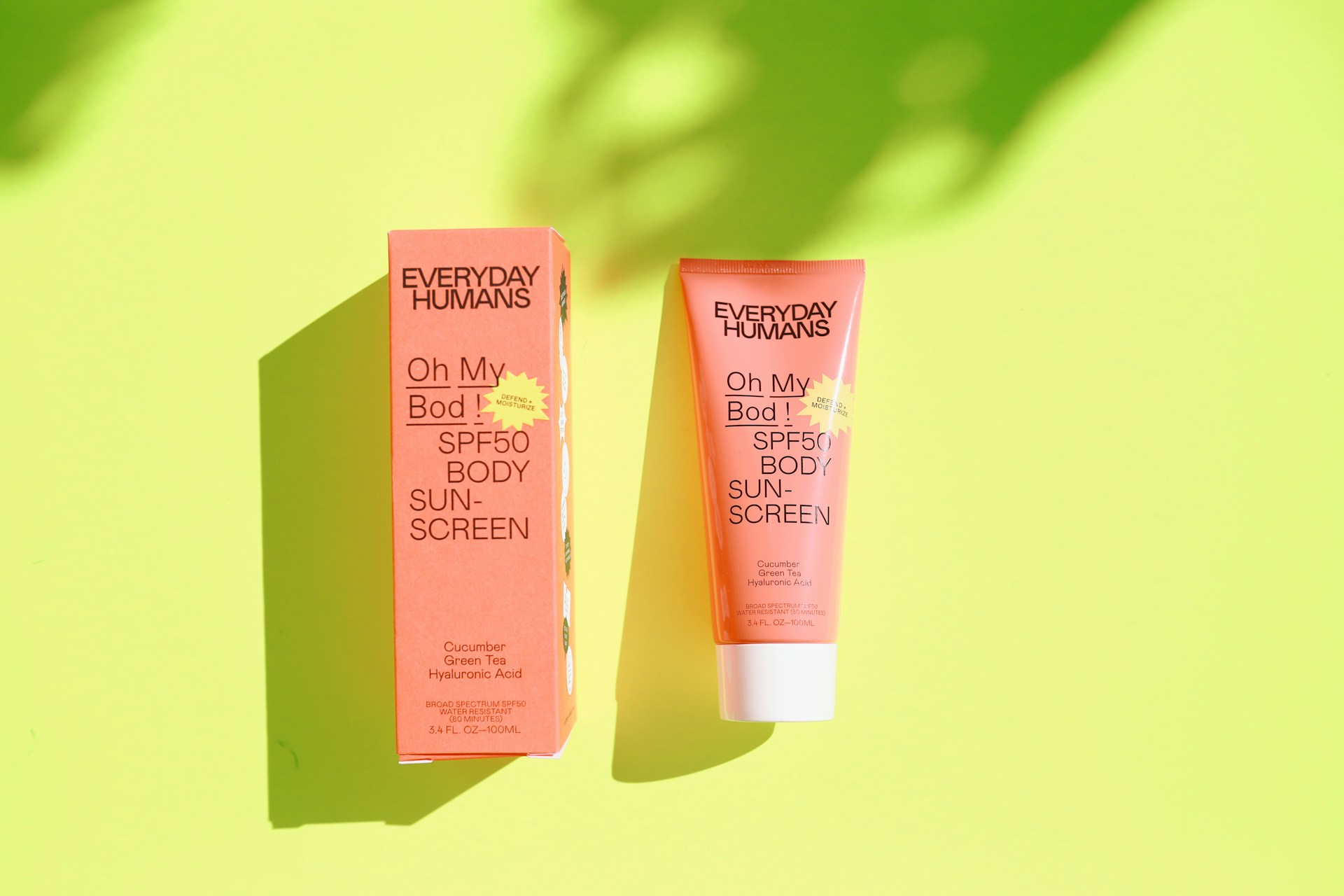AI Brand-Safety Checklist for Sunscreen & SPF Cosmetics Ecommerce

Every sunscreen claim, SPF rating, and ingredient promise carries regulatory weight that can make or break your ecommerce brand. With the global sunscreen market valued at $14.59 billion and projected to reach $19.84 billion by 2032, the stakes for compliance have never been higher. Modern sunscreen retailers face a complex challenge: delivering personalized shopping experiences while navigating FDA monographs, clean beauty demands, and reef-safe claims. Envive's AI agents transform this compliance burden into competitive advantage through intelligent automation that protects both brand safety and customer trust.
Key Takeaways
- FDA allows only 16 active UV filters for sunscreen use, requiring strict compliance monitoring for all product claims
- 87% of young skincare buyers trust proof of performance over influencer endorsements, demanding transparent AI-powered education
- AI-driven safety platforms can reduce processing time from weeks to hours for cosmetics safety cases
- The Modernization of Cosmetics Regulation Act (MoCRA) modernizes cosmetics oversight for cosmetic products. Sunscreens are OTC drugs and remain under FDA drug regulations
- Over $5 million worth of counterfeit beauty products seized globally, many containing harmful substances
- Online sunscreen sales platforms are witnessing growth as the global sunscreen market experiences 12% CAGR
Why Mineral Sunscreen Brands Need AI-Powered Safety Compliance
Mineral sunscreen brands navigate a particularly complex regulatory landscape. With zinc oxide and titanium dioxide as the only two mineral UV filters approved by the FDA, every product variation, concentration claim, and particle size specification requires meticulous documentation. The challenge intensifies when brands make additional claims like "reef-safe," "non-nano," or "broad spectrum"—each carrying specific testing requirements and regulatory implications.
The regulatory burden extends beyond domestic compliance. International markets enforce varying standards for mineral sunscreens, from EU requirements for nanomaterial notification, safety assessment, and [nano] labeling to Australia's therapeutic goods regulations. Manual compliance tracking across jurisdictions becomes impossible at scale, especially when product formulations change or new research emerges about ingredient safety.
The Regulatory Landscape for Mineral SPF
Current FDA regulations classify mineral sunscreens as over-the-counter drugs, requiring adherence to strict monograph standards. Key compliance areas include:
- Concentration Limits: Zinc oxide up to 25%, titanium dioxide up to 25%
- Particle Size Disclosure: In the EU, nanomaterials require [nano] labeling on the INCI list plus notification/safety assessment; the U.S. does not require 'non-nano' labeling for sunscreens
- Broad Spectrum Testing: Critical wavelength ≥370 nm requirement
- Water Resistance Claims: 40 or 80-minute testing protocols only
- SPF Testing Standards: Specific protocols with minimum 10 test subjects
- Photostability Testing: A best practice in the U.S/
Building Trust Through Transparent AI Communication
AI agents that handle mineral sunscreen queries must balance scientific accuracy with consumer-friendly language. When customers ask about reef safety or nano particles, generic AI often provides conflicting or outdated information. Purpose-built systems understand nuanced differences between marketing terms and regulatory definitions, ensuring every response aligns with both brand positioning and compliance requirements.
The trust factor becomes critical when 92% of customers would stop engaging with a brand after two or three negative interactions. For mineral sunscreen brands, this means AI must confidently address common concerns while maintaining regulatory accuracy:
- Explaining why mineral filters sit on skin rather than absorbing
- Clarifying white cast concerns without overpromising
- Addressing reef-safety claims with appropriate scientific backing
- Differentiating between chemical and physical UV protection mechanisms
Best Sunscreen for Face: AI-Driven Personalization and Safety Checks
Finding the best sunscreen for face requires sophisticated matching between skin types, cosmetic preferences, and safety considerations. With SPF 30 blocking about 97% of UVB and SPF 50 about 98%, the marginal protection difference means texture, finish, and compatibility often matter more for facial applications.
Matching Face Sunscreens to Skin Types
AI-powered personalization must consider multiple factors simultaneously:
Skin Type Assessment
- Oily skin: Lightweight, non-comedogenic formulas with mattifying agents
- Dry skin: Hydrating formulations with ceramides or hyaluronic acid
- Sensitive skin: Fragrance-free, mineral-based options with minimal ingredients
- Combination skin: Balanced formulas that won't overwhelm any zone
- Acne-prone: Oil-free, non-pore-clogging ingredients verified through testing
Application Preferences
- Morning routine integration capabilities
- Makeup compatibility and primer functionality
- Reapplication methods for touch-ups over makeup
- Texture preferences from gel to cream to powder
- Tinted versus clear formulation needs
Foundation SPF vs Dedicated Sunscreen
The complexity multiplies when customers seek SPF makeup foundation combinations. AI must understand that while foundation with SPF provides convenience, achieving the recommended 2mg/cm² application thickness for stated protection rarely occurs with cosmetic application amounts.
Envive's Sales Agent addresses this nuance by educating customers about layering strategies—using dedicated sunscreen underneath SPF makeup for optimal protection. This approach builds confidence while avoiding false security from insufficient SPF coverage through makeup alone.
Non-Toxic Sunscreen Ingredient Transparency Through AI Verification
The clean beauty movement has transformed sunscreen shopping into ingredient investigation. Consumers scrutinize INCI lists, cross-reference EWG ratings, and search for specific exclusions like oxybenzone, octinoxate, and parabens. Manual ingredient verification creates friction that kills conversions, while incomplete information erodes trust.
Automated Ingredient Safety Verification
Modern AI systems must maintain comprehensive ingredient intelligence including:
Regulatory Status Tracking
- FDA-approved UV filters and maximum concentrations
- EU's over 1,700 banned substances list updates
- Hawaii bans oxybenzone and octinoxate statewide; Maui County restricts non-mineral sunscreens without a prescription
- International variations in acceptable preservatives
- Color additive regulations for tinted sunscreens
Safety Profile Management
- Published safety assessments from regulatory bodies
- Concentration-dependent safety considerations
- Known allergens and sensitization rates
- Photosensitivity and phototoxicity data
- Environmental impact studies for reef safety claims
Communicating Clean Beauty Claims Compliantly
"Non-toxic" lacks regulatory definition, creating compliance challenges when AI generates content. Brands must establish clear protocols for ingredient communication:
- Allowed: "Free from oxybenzone and octinoxate"
- Prohibited: "Chemical-free" (everything is chemicals)
- Gray Area: "Non-toxic" (requires careful context)
- Recommended: Specific ingredient exclusions with factual basis
AI-driven content generation must recognize these distinctions, using precise language that satisfies clean beauty consumers without creating regulatory exposure.
Attitude Sunscreen and Brand Voice: AI Consistency Across Channels
Brand voice consistency becomes critical when AI handles thousands of customer interactions daily. Eco-conscious brands like Attitude must maintain their sustainability messaging while ensuring every claim meets regulatory standards. The challenge intensifies across multiple touchpoints—from product descriptions to customer service responses.
Maintaining Brand Authenticity with AI
Brand voice consistency shows significant impact on customer trust and loyalty. For sunscreen brands with strong environmental or ethical positioning, AI must embody these values authentically:
Value Alignment Protocols
- Vegan certification verification and communication
- Cruelty-free testing status with appropriate certifications
- Sustainable packaging claims with specific recyclability data
- Carbon footprint considerations in shipping communications
- Supply chain transparency for conscious consumers
Tone Calibration Systems
- Educational without condescension
- Approachable while maintaining expertise
- Inclusive across skin types and concerns
- Empowering rather than fear-based messaging
- Consistent whether discussing SPF 15 or SPF 50
Scaling Personalized Brand Experiences
Envive's Copywriter Agent crafts personalized product descriptions that maintain brand voice while adapting to individual customer needs. This means describing the same mineral sunscreen differently for a teenager worried about white cast versus a parent concerned about reef safety—all while maintaining brand authenticity and compliance.
The system learns from successful interactions, identifying language patterns that resonate with different customer segments without compromising brand identity or safety standards.
Sun Safety Education: AI-Powered Customer Support and Guidance
Educational content about sun safety requires careful balance between helpful information and medical advice avoidance. With over 80,000 cases of skin cancer diagnosed annually in Canada, customers seek authoritative guidance while brands must avoid crossing into medical territory.
Automating Sun Safety FAQs
Common sun safety questions require consistent, accurate responses:
Application Guidance
- Amount needed: 1 ounce for full body
- Timing: 15 minutes before sun exposure
- Reapplication: Every 2 hours or after swimming/sweating
- Expiration: If no expiration date, assume 3 years from manufacture date
- Storage: Room temperature, away from direct heat
Protection Level Education
- SPF ratings and actual protection percentages
- UVA versus UVB protection differences
- Broad spectrum definition and importance
- Water resistance limitations (40 or 80 minutes only)
- Environmental factors affecting protection needs
Building Educational Trust Through AI
Envive's CX Agent provides invisible support that anticipates customer questions before they arise. Rather than waiting for confusion about SPF ratings or application techniques, the system proactively offers relevant education based on browsing behavior and cart contents.
This proactive approach reduces support tickets while building customer confidence. When someone adds both SPF 30 and SPF 50 products, the AI explains the minimal protection difference, helping customers make informed decisions rather than assumption-based purchases.
SPF Blush and Color Cosmetics: Compliance for Multi-Benefit Products
Multi-benefit products combining color cosmetics with sun protection create unique compliance challenges. SPF blush, tinted moisturizers, and foundation with SPF must meet both cosmetic and OTC drug requirements, doubling the regulatory complexity.
Navigating SPF Claims in Color Cosmetics
Hybrid formulations require careful claim management:
Dual Regulatory Requirements
- Cosmetic regulations for color and coverage claims
- OTC drug monograph compliance for SPF claims
- Color additive certifications for tints and pigments
- Stability testing for both color and SPF performance
- Labeling that satisfies both regulatory frameworks
Testing Protocol Considerations
- SPF testing on various skin tones for tinted products
- Water resistance testing compatibility with makeup wear
- Photostability of both UV filters and color pigments
- Comedogenicity testing for acne-prone skin claims
- Patch testing for sensitive skin compatibility
Cross-Category Compliance Challenges
AI systems must understand category-specific requirements:
- Powder SPF products require different application guidance than creams
- Setting sprays with SPF need specific inhalation warnings
- Lip products with SPF require additional safety considerations
- Eye area products may include ophthalmologist-tested marketing claims
- Multi-step routines require compatibility verification
Fenty Beauty and Premium SPF: Luxury Brand Safety Standards
Premium brands like Fenty Beauty face elevated expectations for both performance and safety. With inclusive shade ranges and luxury positioning, these brands must deliver flawless compliance while maintaining aspirational appeal.
Premium Brand Compliance Requirements
Luxury sunscreen brands navigate additional considerations:
Clinical Validation Standards
- Dermatologist testing across diverse skin types
- Clinical photography for efficacy claims
- Consumer perception studies for sensorial claims
- Stability testing in premium packaging
- Batch consistency for luxury quality expectations
Marketing Compliance Complexity
- Influencer content requiring pre-approval
- Global campaign consistency across regulations
- Celebrity endorsement disclosure requirements
- Before/after imagery restrictions
- Prestige retail partner requirements
Influencer Marketing Safety Protocols
With influencer marketing driving premium beauty sales, AI must monitor and guide content creation:
- FTC disclosure requirement enforcement
- Claim verification in sponsored content
- Medical/cosmetic boundary management
- Authentic testimonial verification
- Results disclaimer requirements
AI-powered brand safety extends beyond owned channels to anywhere your brand appears, ensuring consistent compliance across the entire digital ecosystem.
AI Search Optimization for Sunscreen Discovery and Safety
Product discovery drives conversion, but generic search often fails sunscreen shoppers. When customers search "best sunscreen for face," they need results filtered by skin type, finish preference, and specific concerns—not just SPF ratings.
Smart Filtering for SPF Products
Envive's Search Agent understands intent beyond keywords, delivering relevant results through:
Intelligent Query Interpretation
- "Sunscreen for acne" → oil-free, non-comedogenic options
- "Baby sunscreen" → mineral-only, tear-free formulations
- "Reef safe SPF" → oxybenzone/octinoxate-free products
- "Matte sunscreen" → oil-control formulas with specific finish
- "Sunscreen for dark skin" → no white cast, inclusive formulations
Safety-Aware Filtering
- Pregnancy-safe automatic filtering when detected
- Age-appropriate results for children's searches
- Allergen avoidance based on user preferences
- Ingredient exclusion lists for sensitive users
- Medical condition considerations without diagnosis
Intent-Based Sunscreen Recommendations
Understanding searcher intent improves discovery:
- Activity-based needs (sports, swimming, daily wear)
- Climate considerations (humid, dry, high altitude)
- Skin concern prioritization (anti-aging, acne, sensitivity)
- Application preferences (spray, stick, lotion, powder)
- Coverage needs (face only, body, face and body)
The system delivers smart results every time, eliminating dead-end searches that frustrate customers and kill conversions.
Building Customer Trust: AI-Driven SPF Product Reviews and Q&A
Social proof drives sunscreen purchases, but unmoderated reviews can contain misleading claims or safety misinformation. Authentic feedback helps customers identify suitable products while avoiding irritants.
Moderating SPF Claims in Reviews
Review moderation must balance authenticity with compliance:
Acceptable Review Content
- Personal experience with texture and finish
- Subjective assessments of white cast or greasiness
- Compatibility with individual skin types
- Ease of application and blending
- Value perception and repurchase intent
Requiring Intervention
- Medical condition treatment claims
- Unsubstantiated SPF effectiveness statements
- Competitor ingredient safety attacks
- Diagnosis or prescription recommendations
- False protection duration claims
Authentic Social Proof Management
Customer trust building requires genuine reviews while maintaining safety:
- Verified purchase badges for credibility
- Helpful vote systems promoting quality content
- Photo reviews showing real application results
- Q&A sections with expert-verified answers
- Skin type and concern matching for relevance
AI moderation ensures reviews provide value without creating compliance risks or spreading misinformation about sun protection.
Regulatory Compliance Automation for SPF Claims and Marketing
Manual compliance checking cannot scale with modern ecommerce velocity. Between product launches, seasonal campaigns, and continuous content creation, brands need automated systems that catch violations before publication.
Automated Claim Verification
Envive's Sales Agent demonstrates how AI can maintain zero compliance violations through systematic verification:
Pre-Publication Scanning
- Claim classification against FDA monograph requirements
- Prohibited term detection across all content
- International regulation compatibility checking
- Substantiation verification for specific claims
- Warning requirement confirmation
Real-Time Monitoring
- Customer service response compliance checking
- Dynamic content generation with built-in guardrails
- Marketing campaign claim consistency
- Social media content automated review
- Influencer content compliance verification
Cross-Border Compliance Management
Global brands face multiplied complexity:
- FDA OTC monograph requirements for US sales
- EU Cosmetics Regulation for European markets
- Health Canada Natural Health Product regulations
- TGA requirements for Australian distribution
- Regional chemical bans (Hawaii, Maui County, Palau)
AI systems must dynamically adjust content, claims, and product availability based on customer location, ensuring compliance without limiting global reach.
Implementation Checklist for Sunscreen Brand Safety
Week 1-2: Compliance Baseline Assessment
- Document all current SPF products and claims
- Map UV filter ingredients to regulatory limits
- Review existing marketing materials for violations
- Identify high-risk product categories
- Catalog international selling requirements
Week 3-4: AI System Requirements
- Define brand voice parameters and values
- Create approved/prohibited claim databases
- Establish ingredient safety hierarchies
- Build demographic consideration protocols
- Design escalation procedures for edge cases
Week 5-6: Integration and Training
- Upload comprehensive product catalogs
- Configure regulatory rule engines
- Train AI on brand-specific language
- Implement safety verification workflows
- Connect to ingredient safety databases
Week 7-8: Testing and Validation
- Run compliance checks on historical content
- Test edge cases and complex queries
- Verify demographic safety protocols
- Validate international compliance switching
- Stress test with seasonal campaign content
Week 9-10: Deployment and Monitoring
- Phase rollout by product category risk
- Monitor all AI interactions initially
- Track compliance metrics daily
- Gather customer feedback on responses
- Refine based on real-world performance
Measuring Success: Key Performance Indicators
Track these metrics to ensure brand safety while driving growth:
Compliance Metrics
- Regulatory violation rate (target: 0%)
- Claim accuracy percentage (target: 100%)
- Response time for safety concerns
- Audit pass rate improvement
- International compliance success
Business Performance
- Conversion rate with AI assistance
- Cart abandonment reduction
- Average order value increase
- Customer lifetime value growth
- Return rate for recommended products
Customer Trust Indicators
- Safety-related support ticket reduction
- Review sentiment improvement
- Repeat purchase frequency
- Brand trust survey scores
- Net Promoter Score trends
Frequently Asked Questions
How can AI ensure sunscreen ingredient claims are compliant?
AI ensures ingredient compliance through multi-layered verification systems that cross-reference claims against regulatory databases. The system maintains real-time updates of FDA-approved UV filters, concentration limits, and prohibited substances while scanning for claim language that could transform a cosmetic into an unapproved drug. When generating content, AI validates every ingredient mention against safety assessments, allergen databases, and international restrictions. This systematic approach catches violations before they reach customers, maintaining compliance while educating shoppers about ingredient benefits within regulatory boundaries.
What's the difference between mineral and chemical sunscreen safety standards?
Mineral and chemical sunscreens follow the same FDA monograph requirements but face different safety considerations. Mineral sunscreens using zinc oxide and titanium dioxide are generally recognized as safe and effective (GRASE) with fewer systemic absorption concerns. Chemical filters undergo additional scrutiny, with the FDA requesting more safety data for 12 active ingredients regarding systemic absorption levels. AI systems must understand these distinctions to appropriately communicate safety profiles, addressing consumer concerns about hormone disruption or coral reef impact while maintaining scientific accuracy and avoiding unfounded chemical fears.
How do I verify SPF claims in makeup products are accurate?
SPF claims in makeup require the same rigorous testing as dedicated sunscreens, following FDA-mandated protocols with human subjects. AI verification systems check that products display proper Drug Facts labels, include required warnings, and avoid claiming protection beyond tested levels. The challenge lies in educating customers that achieving stated SPF requires applying 2mg/cm² of product—far more than typical cosmetic application. AI should guide customers toward layering dedicated sunscreen under SPF makeup rather than relying solely on cosmetic SPF for sun protection.
Can AI help personalize sunscreen recommendations while maintaining compliance?
Yes, AI excels at personalized recommendations within compliance boundaries by understanding individual needs without making medical claims. Systems like Envive's analyze skin type, lifestyle factors, and preferences to suggest appropriate products while strictly avoiding diagnosis or treatment claims. The AI considers factors like outdoor activity levels, skin sensitivity history, and texture preferences to match products effectively. This personalization drives significant conversion improvements while maintaining regulatory compliance through built-in guardrails that prevent inappropriate medical recommendations.
What are the key regulatory requirements for selling sunscreen online?
Online sunscreen sales must comply with FDA OTC drug regulations, including proper labeling with Drug Facts panels, approved active ingredients within specified concentrations, and substantiated SPF claims through standardized testing. Sellers must register establishments, list products with FDA, report adverse events, and maintain quality systems. Marketing materials cannot make drug claims beyond the approved monograph, must include required warnings, and should avoid "waterproof" or "all-day protection" claims. OTC drug requirements (sunscreen) include Drug Facts labeling, cGMP compliance, drug listing, establishment registration, and adverse event reporting, which are separate from MoCRA cosmetic requirements.

Other Insights

Partner Spotlight: Andrea Carver Smith

Is AI a bubble — or the beginning of durable value?

Partner Spotlight: Siara Nazir
See Envive
in action
Let’s unlock its full potential — together.






